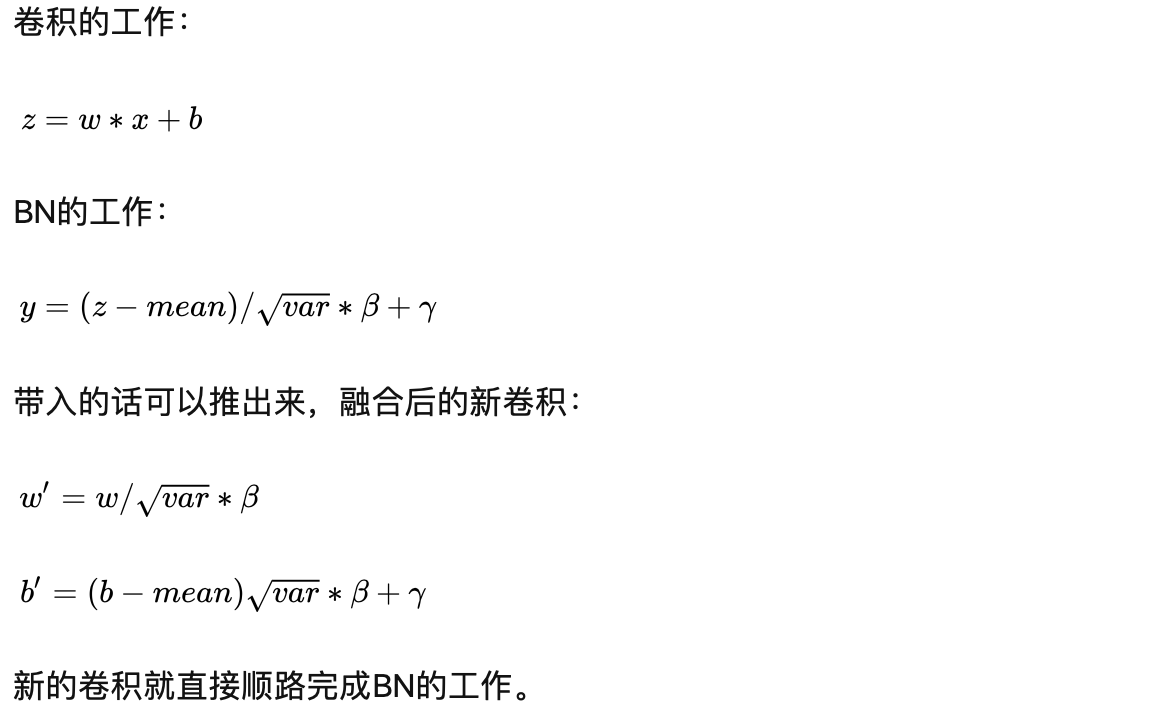def fuse_conv_bn_eval(conv, bn, transpose=False):
assert(not (conv.training or bn.training)), "Fusion only for eval!"
fused_conv = copy.deepcopy(conv)
fused_conv.weight, fused_conv.bias = \
fuse_conv_bn_weights(fused_conv.weight, fused_conv.bias,
bn.running_mean, bn.running_var, bn.eps, bn.weight, bn.bias, transpose)
return fused_conv
def fuse_conv_bn_weights(conv_w, conv_b, bn_rm, bn_rv, bn_eps, bn_w, bn_b, transpose=False):
if conv_b is None:
conv_b = torch.zeros_like(bn_rm)
if bn_w is None:
bn_w = torch.ones_like(bn_rm)
if bn_b is None:
bn_b = torch.zeros_like(bn_rm)
bn_var_rsqrt = torch.rsqrt(bn_rv + bn_eps)
if transpose:
shape = [1, -1] + [1] * (len(conv_w.shape) - 2)
else:
shape = [-1, 1] + [1] * (len(conv_w.shape) - 2)
conv_w = conv_w * (bn_w * bn_var_rsqrt).reshape(shape)
conv_b = (conv_b - bn_rm) * bn_var_rsqrt * bn_w + bn_b
return torch.nn.Parameter(conv_w), torch.nn.Parameter(conv_b)
import torch
import torchvision
torch.set_grad_enabled(False)
x = torch.randn(16, 3, 256, 256)
rn18 = torchvision.models.resnet18(pretrained=True)
rn18.eval()
net = torch.nn.Sequential(
rn18.conv1,
rn18.bn1
)
y1 = net.forward(x)
fused_conv = torch.nn.utils.fusion.fuse_conv_bn_eval(net[0], net[1])
y2 = fused_conv.forward(x)
d = (y1 - y2).norm().div(y1.norm()).item()
print("error: %.8f" % d)
融合前推理100次的时间 : 2.601980792125687
融合后推理100次的时间 : 2.0703182069119066
